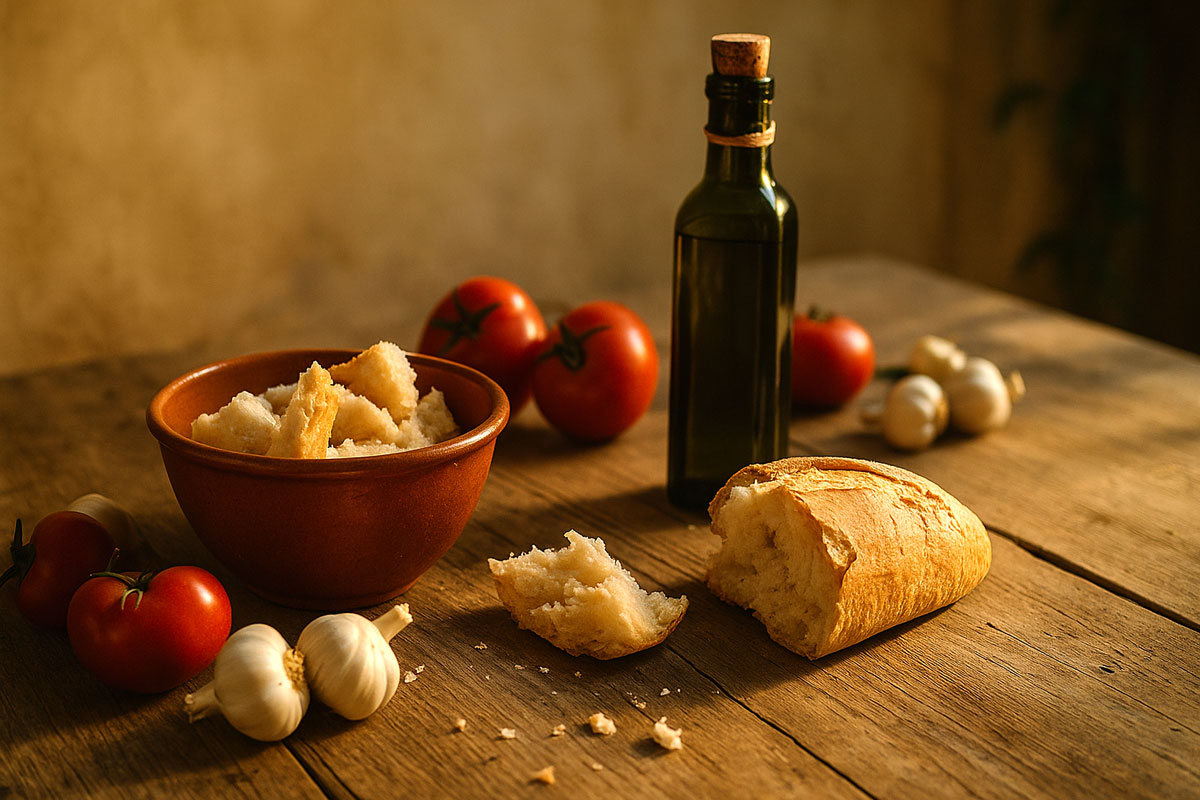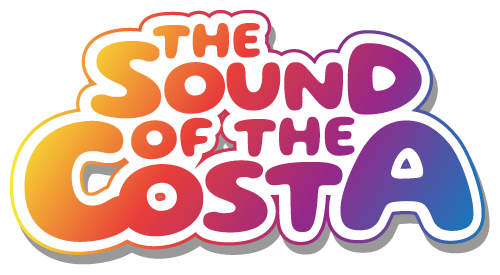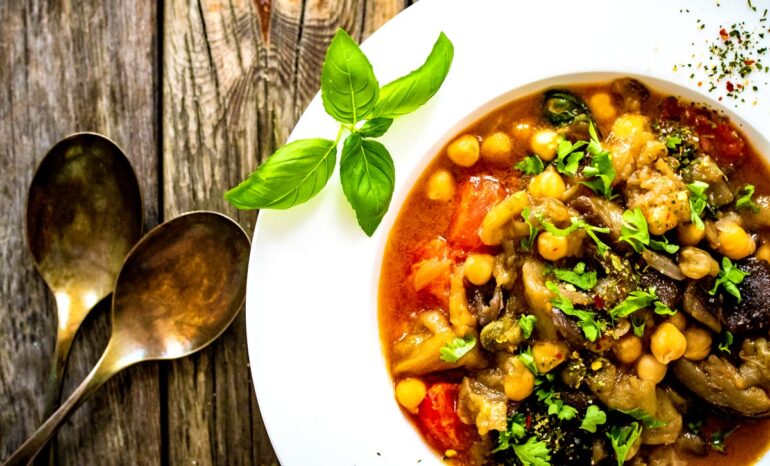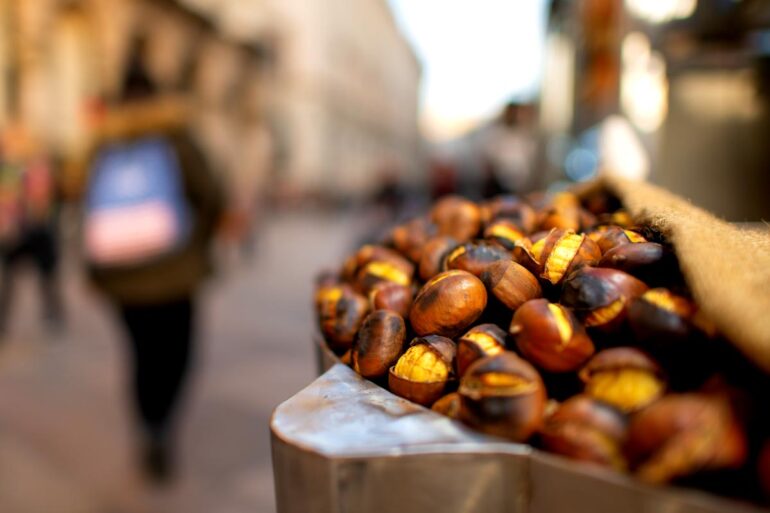Listeners:
Top listeners:
00:00
00:00
volume_up
chevron_left
-
 play_arrow
play_arrow
Costa Blanca Radio The Sound Of The Costa
-
 play_arrow
play_arrow
FeelGood Radio The Sound Of The Costa
music_note
Cocina pobre: what Spain’s humbler kitchens teach us about flavour and sustainability

share
close
There’s beauty in simplicity. Not the kind found in minimalist interiors or sleek designer kitchens, but in a kitchen where wasting even a single crumb is unthinkable. In Spain, it’s called cocina pobre — literally “poor kitchen” — and it’s a culinary tradition that goes far beyond cheap cooking. It’s a way of life, born out of necessity, but evolved into a source of flavour, ingenuity and sustainability. When you taste it, you’re not just tasting the dish — you’re tasting the history and creativity of the people who made it.
Everything has value
The foundation of cocina pobre is simple: use what you have, and make the most of it. You don’t throw away stale bread — you turn it into migas: breadcrumbs fried with garlic, olive oil and sometimes a bit of chorizo or bacon. A handful of leftover vegetables becomes a nourishing menestra or a hearty soup. And a small piece of meat or fish is stretched into a stew that feeds the whole family. It’s all about creativity and respect for ingredients — long before “zero waste” became a trendy term. In this kitchen, even a ham bone has a purpose: it adds depth to broths and bean dishes.
Stories in a pan
Every region in Spain has its own dishes born out of hardship, yet still proudly served today. In Andalusia, there’s gazpacho — once the summer meal of field workers. Stale bread, tomato, olive oil, garlic and a splash of vinegar, served chilled to beat the heat. In the northwest, in Asturias, you’ll find fabada — a slow-cooked bean stew with a bit of sausage and bacon, simmered for hours while farmers worked the land. And in the region of Valencia, there’s olla de la Plana, a hearty mix of vegetables, beans and whatever ingredients were at hand. These dishes carry the stories of generations — with the pan as the heart of the home.
Flavour through time, not luxury
Cocina pobre proves that flavour doesn’t have to come from expensive ingredients. Its depth lies in slow cooking, patience, and combining ingredients that bring out the best in each other. A simple pisto manchego — peppers, courgette, onion and tomato — becomes rich and full of character if you take the time to let it gently melt together in the pan. Sometimes an egg is cracked on top for extra creaminess, or it’s served with a piece of bread to soak up every last drop of sauce. Luxury here isn’t about truffle or lobster — it’s in the care and attention behind the dish.
Sustainability as second nature
What we now see as a conscious lifestyle choice — wasting less, cooking seasonally, buying local — was once pure necessity. Seasonal vegetables came from your own land or nearby farmers. Leftovers always got a second life: veg in an omelette, meat scraps in a stew, fish heads in a soup. People didn’t think in terms of ‘waste’, but in possibilities. Even the cooking methods were often energy-efficient: big pots simmered slowly over the same wood fire that heated the house. Sustainability wasn’t a buzzword — it was simply part of daily life.
A lesson for now
Perhaps that’s the greatest lesson of cocina pobre: that creativity often grows from limitation. That you can eat richly, even with humble ingredients. And that a dish made from leftovers isn’t any less special — in fact, it’s sometimes unforgettable because of that. It reminds us that food isn’t just about filling the stomach, but about nourishing — body and soul. And that even in a time of abundance, we still have something to learn from the generations who knew how to make much from little.
Written by: Wouter van der Laan
cocina pobre gusto leftovers seasonal dishes Spanish cuisine sustainability tradition
Rate it
Similar posts
Search
Latest news

The art of cozy living: why Spaniards don’t need candles

Slow mornings: why starting your day slowly makes it better

Stews and stories: comfort food just like grandma used to make

Warmth without waste: how to keep your Spanish home comfortable

The scent of chestnuts: Spanish autumn dishes on the Costa
-
Recent Posts
- The art of cozy living: why Spaniards don’t need candles
- Slow mornings: why starting your day slowly makes it better
- Stews and stories: comfort food just like grandma used to make
- Warmth without waste: how to keep your Spanish home comfortable
- The scent of chestnuts: Spanish autumn dishes on the Costa
© 2025 The Sound Of The Costa; All Rights Reserved



